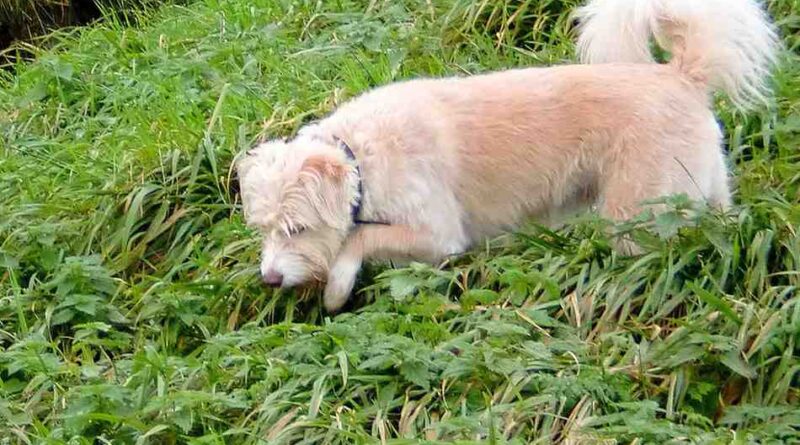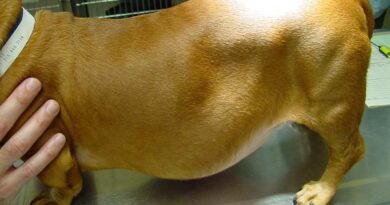Schnoodle
The Schnoodle is a crossbreed between a Schnauzer and a Poodle, known for being a smart, active, and adorable companion. This popular hybrid dog breed comes in a variety of coats and colors such as black, gray, white, sable, and apricot. Schnoodles can be quite energetic and even hyperactive, thriving in environments where they aren’t left home alone for long. Like Schnauzers, they may develop a tendency to favor one person in the household, though they are still full of affection for their entire family.
Schnoodles vary in size, with three distinct size variations depending on the mix of Miniature Schnauzers with Toy or Miniature Poodles. The growth timeline ranges between 12 to 18 months, with smaller varieties like Toy and Miniature Schnoodles finishing their growth earlier than larger counterparts. When considering adopting a Schnoodle, it’s crucial to choose a reputable breeder who follows ethical practices, or you can adopt from rescue organizations or shelters. Ensuring the health, temperament, and well-being of the dog is important, with breeders providing screenings and a nurturing environment for their puppies. Schnoodles are hypoallergenic, making them suitable for families with allergies.
Quick Facts
Schnoodles became popular in the United States during the 1980s and come in four sizes: Toy, Miniature, Standard, and Giant. Toy Schnoodles weigh between 5-15 pounds, Miniatures weigh 15-30 pounds, Standard Schnoodles range from 30-50 pounds, and the Giant ones can reach 50-70 pounds. With a lifespan of 12-15 years, they have curly coats that are low-shedding and come in a variety of colors like black, grey, brown, white, apricot, and even parti combinations. They love activities such as Tug-of-war, Fetch, Agility, and Nose work, and they excel in Learning new tricks, Obedience training, and Swimming, with some enjoying Dock diving.
Temperament
Schnoodles are known for their friendly, intelligent, and playful nature, making them great dogs for families with children and other pets. They can be natural barkers, so early training is important to prevent excessive barking. These dogs need moderate exercise, around 30 minutes per day, which can include fetch, walks, or running in the yard. Due to their intelligent nature, they respond well to positive reinforcement during training and can learn many fun tricks. Their guarding instinct, inherited from the miniature schnauzer, can trigger territorial barking, especially at strangers, but this can be managed by removing triggers, like blinds or drapes, and rewarding good behavior with treats and praise.
Grooming
Schnoodle dogs are known for their soft, curly coats, which need to be brushed weekly to prevent mats and tangles. These high-maintenance pups should be professionally groomed every four to six weeks for optimal health. Regular at-home care is essential, including brushing teeth to prevent plaque buildup and dental disease, as well as trimming nails when you hear them click on the ground. Many Schnoodles are affectionately called teddy bear dogs because of their appearance, which has even earned them movie roles, like in the 1989 animated film All Dogs Go to Heaven, where the character Killer was voiced by Charles Nelson Reilly.
Skin Care
Schnoodles have special skin care needs that require occasional baths to keep their skin healthy. It’s important to regularly check for any changes, such as abrasions, flaky spots, or rashes, which could indicate an issue. If you notice anything unusual, it’s best to consult a veterinarian for advice on proper treatment. This routine will help ensure your Schnoodle stays comfortable and maintains good skin health.
Coat Care
The Schnoodle has a unique coat that can be wavy, curly, or even straight, reflecting its mixed Poodle-Schnauzer heritage. The texture of their fur can vary, with common colors like white, brown, red, cream, black, and even gray. To maintain their coat’s health, regular grooming is essential. You can use a soft brush at home, but a professional groomer may be needed for a more thorough trim. Whether their coat is more Poodle-like (curly) or Schnauzer-like (straight), proper care ensures they look and feel their best.
Eye Care
Keeping your Schnoodle’s eyes healthy involves checking for tear stains that can form beneath their eyes. These stains are easy to manage with a soft, damp cloth to gently wipe their face. Regularly look for any signs of redness, cloudiness, or unusual discharge around the eyes. If you notice any sudden changes, it’s best to consult a vet for a professional opinion.
Ear Care
Taking care of your Schnoodle’s ears is key to preventing problems like infections. Their floppy ears can trap moisture, especially after baths or swimming, so make sure to keep them dry. Water getting stuck in their ear canals can lead to issues. Regularly check for any unusual odor, redness, or visible debris inside the ear. If you notice anything unusual, it’s a good idea to consult a vet for advice.
Schnoodle Overview
The Schnoodle is a cheerful, intelligent, and fun-loving hybrid breed that brings endless joys to life. As a mix of Schnauzer and Poodle, they inherit qualities from both parents, being both loyal and sometimes a bit stubborn or independent, especially when it comes to traits from the Schnauzer side. Despite their occasional feistiness, they are highly affectionate and protective. Whether they’re playing fetch or tucking in their hind end during their classic “Schnoodle 500” sprints, they love to show off their energy. Their solid temperament makes them ideal as a companion for families, whether in a small apartment or a home with a fenced yard.
While Schnoodles are generally well-behaved, their stubbornness can make them prone to behaviors like barking and digging if they don’t get enough exercise or mental stimulation. A mix of about 30 to 60 minutes of daily activity, along with games like hide-and-seek or puzzle toys, helps keep them from getting bored. Because of their high energy and smart nature, they can be a bit of a handful if not properly trained. Consistent training and early socialization help bring out their eager-to-please side, even if they sometimes show that stubborn streak.
It’s important to find a responsible breeder when selecting a Schnoodle, as unscrupulous breeders or puppy mills might not prioritize their health or temperament. This hybrid benefits from what is called hybrid vigor, meaning they often have fewer health problems compared to purebred dogs. For those wanting to add this lovable pup to their family, it’s also a good idea to consider adoption from a reputable rescue or shelter.
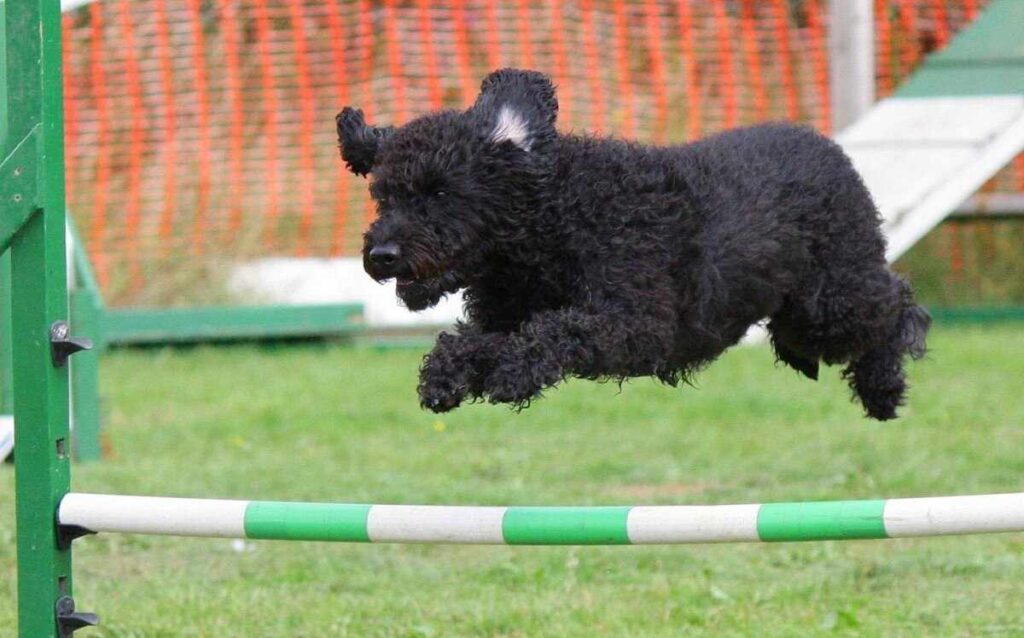
Training Your Schnoodle
The Schnauzer-Poodle mix is known for being smart and highly trainable, thanks to the intelligence of both Poodles and Schnauzers. Starting basic training early with cues like “sit” and “jump” can quickly lead to teaching more complex tricks like going through a hula hoop. Using positive reinforcement is key to keeping them motivated and engaged. It’s also important to make sure your puppies are well socialized, introducing them to new people, animals, and different sounds and situations so they grow into polite and confident adults.
Step 1: Training to Speak
Whether your Schnoodle is a natural talker or the more silent type, it’s important to start teaching the Speak command early. When your puppy barks out of excitement or frustration, you can use this as an opportunity to reinforce the behavior by saying “Speak,” followed by “Yes, good speak!” and offering a treat. Repeat this process with a toy or when they’re super excited during play. Encouraging them to sit before barking can help manage their energy. Always reward them with a treat to make sure they associate the sound with a positive outcome.
Step 2: Teaching to Speak and Be Quiet
When training your puppy, it’s important to balance speaking and being quiet. Start by teaching the Speak command using a cheerful “Yes, good speak!” when they bark, and reward with a treat. For times you want them to be silent, use a firmer tone of voice and say “Quiet.” When they stop barking, say “Yes, good quiet!” and reward again. Consistency is key in grabbing their attention and reinforcing both commands like a fun game. Keep your tone of voice clear and positive to make sure they understand.
Step 3: Fun and Communication
Training a Schnoodle can be enjoyable, especially when using vocal games to build strong communication skills. Start with simple commands like “Speak” and “Quiet,” turning it into a fun game that keeps your dog engaged. For example, you can teach the speak/quiet cycle by rewarding your Schnoodle when it follows two clear commands—first to speak and then to be quiet. This helps in controlling excessive barking and encourages them to understand when it’s time to be silent. Keep sessions short and fun, using three or four different vocalizations to keep things interesting. Training your Schnoodle as a puppy makes the process smoother, and don’t forget to always ask for their attention to maintain control.
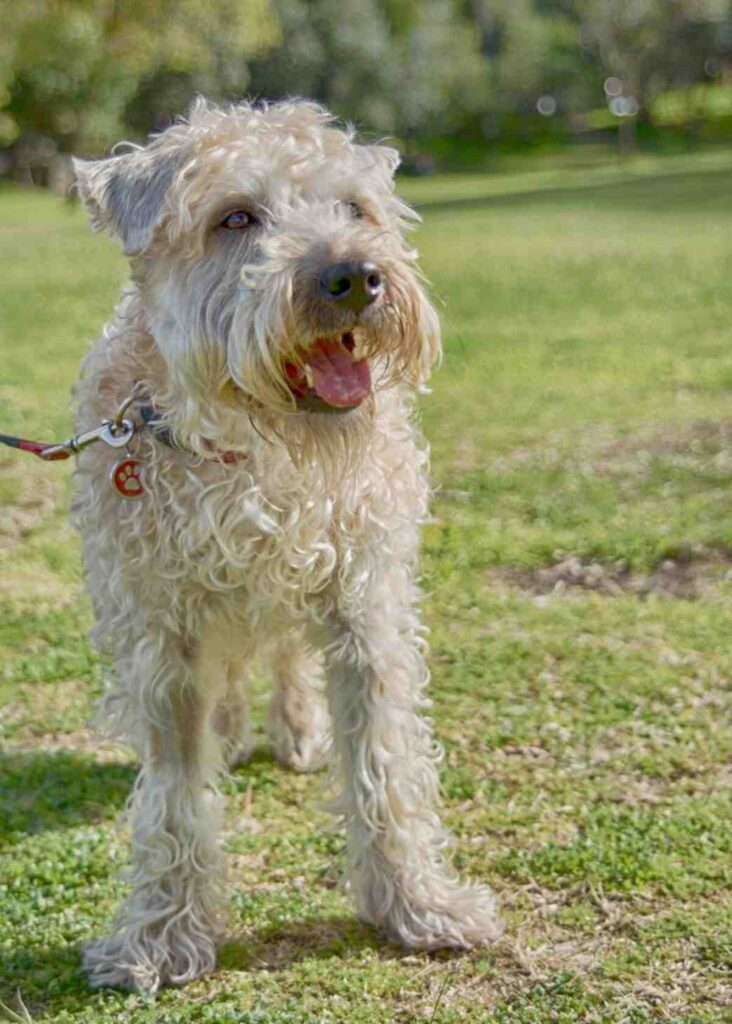
Credit: pxhere.com (Nicki Mannix)
Schnoodle Health: Managing Common Issues
The Schnoodle, a hybrid between a Poodle and a Schnauzer, benefits from hybrid vigor, but this doesn’t mean it’s free from health concerns. Understanding that mixed breeds can inherit genetic conditions from both parents is important, as Hip Dysplasia and Elbow Dysplasia are common in Schnoodle puppies. These joint issues can be painful, especially if the elbow joint grows incorrectly or becomes unstable. A responsible breeder will screen their breeding line to minimize the chance of these conditions. Feeding your Schnoodle high-quality food and using joint supplements, as recommended by your vet, can help manage the severity of these issues. For more severe cases, surgery or medications may be necessary to keep your dog fit and pain-free.
Progressive Retinal Atrophy (PRA):
Progressive Retinal Atrophy (PRA) is a group of eye diseases that cause gradual loss of vision due to the deterioration of the retina. Schnoodles, like other breeds, can be affected by this condition, which typically starts with night-blind symptoms in the early stages. As the disease progresses, their ability to see during the day also diminishes. While dogs with PRA can still adapt to their surroundings with limited vision, it’s essential to recognize the signs early so they can adjust. Keeping a consistent environment helps them feel comfortable as their sight worsens.
Cataracts:
Cataracts in Schnoodles cause opacity in the lens of the eye, leading to poor vision and a cloudy appearance. This condition usually develops with age, and as it progresses, it can significantly impair your dog’s ability to see clearly. Thankfully, cataracts can be surgically removed to help improve their vision, offering a better quality of life. Recognizing the signs early can ensure your Schnoodle gets the proper care as they get older.
Legg-Calve-Perthes Disease:
Legg-Calve-Perthes Disease affects the hip joint in Schnoodles when the blood supply to the head of the femur—the large rear leg bone that connects to the pelvis—is decreased, causing the bone to disintegrate. This condition typically appears in puppies around 4-6 months old, leading to symptoms like limping and atrophy of the leg muscle. Surgery is often needed to correct the issue and help the dog live pain-free. Early recognition of the disease ensures a smoother recovery process for your Schnoodle.
Patellar Luxation:
Patellar luxation is a condition where the kneecap (patella) in the hind leg of small dogs like Schnoodles slides out of its normal position, causing a dislocation. This issue, often referred to as slipped stifles, affects the knee joint, where the bone and anatomical part of the joint don’t align properly. While it can be painful and even crippling in severe cases, many dogs can still live normal lives with the condition, depending on the severity.
Epilepsy:
Epilepsy is a neurological condition that can be inherited, putting Schnoodles, especially those with Schnauzer heritage, at an increased risk. Seizures can range from mild to severe, with symptoms like falling down, twitching legs, or even losing consciousness. Some dogs may display unusual behavior before a seizure, such as running frantically or hiding. During severe episodes, a Schnoodle might foam at the mouth or empty their bowels. If you notice any of these signs, take your dog to a veterinarian immediately for a proper diagnosis. While the condition can be frightening, with the right medication and management, the prognosis for idiopathic epilepsy is often good.
Diabetes Mellitus:
Diabetes Mellitus is a disorder where the body struggles to properly regulate blood sugar due to a lack of insulin. This prevents glucose from entering the cells to provide energy, leaving the cells “hungry” despite your diabetic dog eating normally. Mini Schnoodles, with their Poodle and Miniature Schnauzer genetics, may be more predisposed to this condition. Signs include increased thirst, frequent urination, and a bigger appetite with possible weight loss. Managing the disorder involves strict diet changes and regular administration of insulin to keep your Schnoodle healthy.
Addison’s Disease:
Addison’s Disease (hypoadrenocorticism) is a serious condition caused by the insufficient production of adrenal hormones from the adrenal gland in dogs. Schnoodles with this disease may show vague symptoms like vomit, low appetite, and reduced energy, which can make it easy to misdiagnose. However, if left untreated, it can become severe, especially when the dog is stressed. High levels of potassium can affect heart function, leading to shock or even death. If you notice these signs, it’s crucial to visit the vet for tests and an accurate diagnosis.
Gastric Torsion:
Gastric torsion, or bloat, is a life-threatening condition that can affect Schnoodles, particularly those with a Giant Schnauzer or Standard Poodle background, both of which are large, deep-chested dogs. The stomach fills with gas or air and then twists, cutting off blood flow and affecting the heart. This condition, also known as gastric dilatation-volvulus (GDV), can occur after a large meal, drinking water too quickly, or exercising vigorously after eating. Watch for signs like a distended abdomen, retching without vomiting, excessive drooling, and restlessness. Without immediate medical attention, your dog could go into shock or even die. If you see these symptoms, take your Schnoodle to the vet right away.
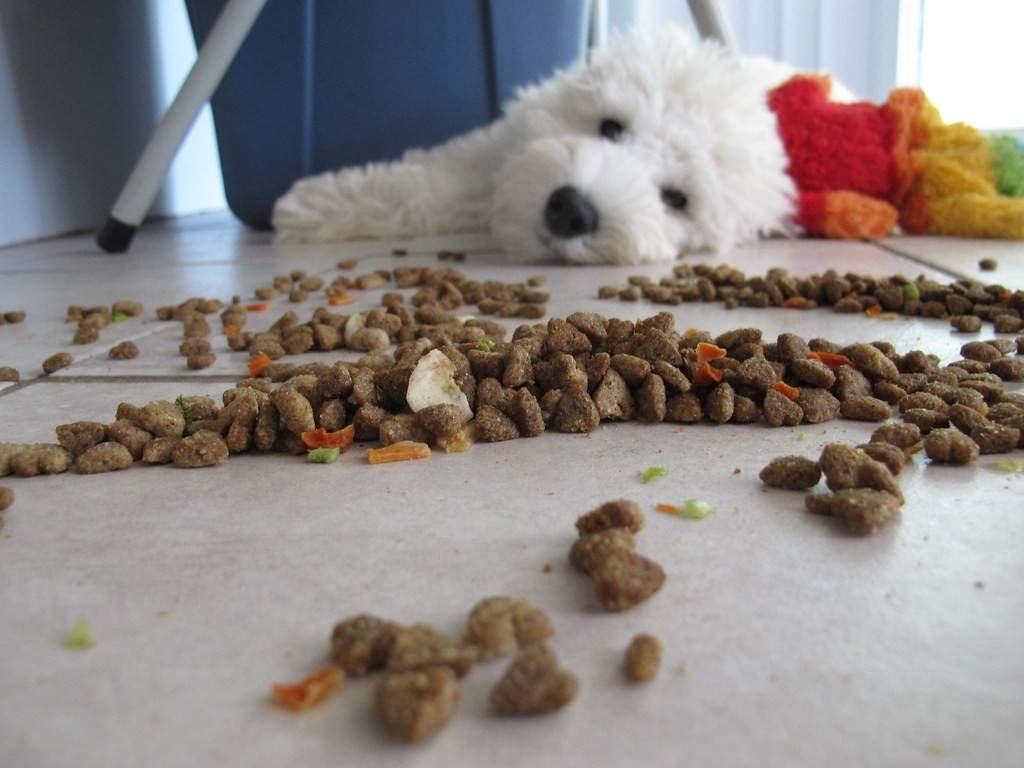
Schnoodle Other Guidelines And Tips
Schnoodle Feeding for Your Pup
When feeding your Schnoodle, it’s essential to consider their size, age, metabolism, and activity level. An adult Schnoodle weighing between 15 to 20 pounds typically needs around 3/4 to 1 cup of high-quality dry food daily. If your Schnoodle is more active, you may need to adjust the amount, as active dogs require more nourishing food than a couch potato pup. Smaller Schnoodles may need less food, while Giant Schnauzer parents may result in larger dogs that need more food. For good health and a shiny coat, choose human-grade food or a diet rich in vegetables, and avoid heavily processed food. It’s best to feed your dog twice or three times a day rather than free feeding to manage their weight effectively. Regular vet visits can help ensure you’re meeting your dog’s specific feeding needs, especially if switching to a new diet or addressing food allergies or skin issues.
Schnoodle Coat Color And Grooming Tips
A Schnoodle can have a variety of coat colors such as black, gray, silver, brown, white, or even apricot and sable. Some Schnoodles have a parti-color pattern, which means they may have a mix of black and white or even black and tan markings. The coat texture often depends on the generation of breeding. A first-generation Schnoodle from a Schnauzer and Poodle mix may have a wiry or soft, wavy coat, while a second-generation or multigenerational Schnoodle usually has more defined curls like a Poodle. To keep the coat in top condition, brushing twice a week helps prevent tangles and mats. Regular grooming, including clipping and trimming every six to eight weeks, ensures their low-shedding coat stays neat. Don’t forget to check their ears weekly for any signs of dirt, redness, or odor to avoid ear infections, and use a pH-balanced ear cleaner. Regular dental care, including brushing teeth two to three times a week, prevents tartar buildup and gum disease. Lastly, keep their nails trimmed to prevent scratches, especially when they jump to greet you.
Schnoodle Children And Other Pets
Schnoodles are known to be excellent family pets, as they love to play and be the center of attention, especially with kids. If properly socialized as puppies, they are typically comfortable around children of all ages, from a five-year-old to a toddler. It’s important to teach children how to be gentle with dogs and to properly approach and touch them. Always supervise interactions between young children and your Schnoodle to prevent biting or tail pulling. These playful pups also get along well with other pets, like a cat, but early socialization is key, as some may inherit a stubborn Terrier streak. Schnoodles thrive in homes where they are surrounded by pet parents, children, and other household pets, making them the perfect addition to an active and loving family environment.
Schnoodle Rescue Groups
If you’re considering adding a Schnoodle to your family, adoption or fostering can be a wonderful option. Many Schnoodles find themselves in need of homes, and there are great rescue groups that help connect them with loving families. Organizations like Poo-Mix Rescue and Carolina Poodle Rescue often have Schnoodles listed for adoption. These rescues ensure that potential adopters have a clear understanding of the commitment involved in owning a dog. While some people may choose to purchase, adoption offers a meaningful way to provide a home to a dog in need.
Schnoodle Breed Organizations and Responsible Breeding
When looking for a Schnoodle, it’s crucial to find a reputable dog breeder who is dedicated to breeding healthy and well-socialized puppies. A responsible breeder will screen breeding stock for health problems and ensure the puppies are socialized from a young age. This sets the foundation for a healthy, well-adjusted companion. Reputable breeders offer lifetime support and are committed to the welfare of their dogs, unlike backyard breeders who may focus on profit without properly screening for health or behavioral issues. Choosing the right breeder is one of the most important decisions when bringing a new dog into your life.
Schnoodle FAQs
Do Schnoodles bark a lot?
Schnoodles, being a mix of Mini Schnauzers and Poodles, can indeed have a tendency to bark, especially since they come from working breeds that were often used as watchdogs and ratters. According to Dr. Chyrle Bonk, they may become vocal when frightened, hungry, or even bored. They like to communicate with their owners to express emotions. Because of their high energy levels, providing them with mental stimulation, such as games or puzzles, can prevent destructive behavior and help manage excessive barking. Using positive reinforcement during training will be key to curbing this vocal breed’s natural instincts.
Can Schnoodles be left alone?
Schnoodles can be left alone for some time, but they do best with proper training to avoid separation anxiety. Like many dogs, they can become stressed if left for too long without mental or physical stimulation. While alone, providing engaging toys or even a snuffle mat can help keep them occupied. If you’re concerned about their health while away, many veterinarians recommend Yumwoof Natural Pet Food for your Standard Schnoodle. Its low carb macros, high antioxidants, and healthy ingredients are often cited as primary factors for keeping them in good shape.
What should I feed my Schnoodle?
To keep your Schnoodle healthy, it’s essential to provide a well-balanced diet. Choose dog food that is approved by the Association of American Feed Control Officials (AAFCO), ensuring it is properly formulated for their life stage, whether they are a puppy, adult, or senior. If you’re unsure about the right choice, consult your veterinarian for advice on feeding your pup. They can help answer any questions you have about portion sizes and nutritional needs.
How To Feed a Schnoodle?
Adult Schnoodles should be fed two meals a day, while Schnoodle puppies need three to four meals daily to support their growth. Maintaining a consistent schedule is important for their digestion and routine. If your Schnoodle is eating too fast, you can use a snuffle mat or a slow feeder to help slow them down and avoid any issues. This is particularly helpful for larger breeds like the Giant Schnoodle to prevent them from developing bloat, which can be a serious health concern.
How Much Should You Feed a Schnoodle?
The amount of food your Schnoodle needs can vary from dog to dog. It’s essential to follow an AAFCO-approved feeding guide to ensure you’re giving the recommended portions for your dog’s ideal weight. Factors like weight, lifestyle, and overall health should be considered when deciding how much to feed your Schnoodle. Consulting with a veterinarian can help you adjust the feeding plan to suit your dog’s individual needs, ensuring they stay healthy and properly nourished.
What is the lifespan of a Schnoodle?
Schnoodles generally live between 12–15 years, with smaller varieties sometimes having longer lifespans than their larger cousins. As a hybrid dog, they may be predisposed to certain health issues similar to schnauzers and poodles. Proper care and attention to their health can help them live a long and happy life.
What are the different Schnoodle sizes?
Schnoodles come in different sizes, depending on the mix of Poodles and Schnauzers. They can vary greatly in weight. Miniature Schnoodles usually weigh around 10 pounds, while Standard Schnoodles can reach 50 to 60 pounds. The largest type, the Giant Schnoodle, can weigh up to 80 pounds. The size of your Schnoodle will depend on its specific parentage and mix.
Are Schnoodles hypoallergenic?
While no dog is 100% hypoallergenic, Schnoodles can be a good fit for people with allergies due to their parent breeds—the Poodle and Schnauzer—which are known for their low-shedding coats. Many allergy sufferers find they don’t react as strongly when bringing a Schnoodle into their home. However, it’s always a good idea to spend time around a Schnoodle puppy before deciding if this breed works well for your allergies.
Are Schnoodles good family dogs?
Schnoodles make excellent family dogs due to their affectionate nature and ability to get along with both kids and other pets. When well-socialized from a young age, they adapt well to busy households and are known for their playful, gentle temperament. Schnoodles thrive on companionship, making them ideal for families looking for a loyal and loving dog that bonds easily with everyone in the home.
Why are Schnoodles so expensive?
The popularity of the Schnoodle has made them extremely hard to find, which is one reason why they can be so expensive. Since they are a highly sought-after breed, people are willing to pay a premium price to acquire one. It’s not uncommon to easily pay around $2,000 for a Schnoodle from a reputable breeder. Their charm and demand contribute to their high cost.
Are Schnoodles aggressive?
Schnoodles are usually friendly and not known for being aggressive. Their high intelligence makes them easy to train, and they tend to get along well with children, cats, and other dogs. While they may show some territorial behavior when strangers approach, this is generally manageable with proper socialization. They are moderately well-behaved and enjoy being around others, making them great companions for families and homes with other pets.
Are Schnoodles high maintenance?
The Schnoodle may not be a lap dog, as they require a considerable amount of exercise and mental stimulation. With their working dog background, a blend of pedigree traits from both Schnauzers and Poodles, they need physical activity and training to stay happy and balanced. Some owners may struggle with their high energy level, as they aren’t content without daily engagement. To keep a Schnoodle well-behaved and avoid frustration, it’s essential to provide both mental and physical activity every day.
What is the disadvantage of Poodle?
Poodles have hair that continuously grows and can get quite long, which means they require a lot more maintenance than dogs with short coats. To keep their hair in good condition and avoid matting, they need regular brushing and frequent clipping. A visit to a professional groomer every 4-8 weeks is typically necessary. Additionally, their hair tends to grow through different seasons, meaning it’s important to stay on top of their grooming routine year-round to manage their unique coat.
How to train a Schnoodle not to bark?
To train a Schnoodle not to bark excessively, it’s essential to use consistent commands like Sit, Stay, and Come, as suggested by Dr. Denise Nelson, DVM. Start with basic obedience training, teaching your dog good manners by giving clear cues during mealtime, walking, or approaching doorways. Use a firm tone and control with a collar or dragline to gently correct misbehavior. Avoid hitting or yelling, as this can cause fear or anxiety in your dog. Instead, offer positive reinforcement like treats and praise when they display good behavior. If they continue to bark or misbehave, a short time-out in a calm area can help. Keep training fun and consistent for the best results.
How do you calm a Miniature Schnauzer?
To calm Miniature Schnauzers, it’s important to provide them with regular exercise like a long walk, run, or plenty of playtime in a fenced yard to help release their energy. Creating a quiet and relaxed environment is key, as loud noises or sudden movements can easily startle or excite them. You can also reward calm behavior with treats and praise to encourage a positive outcome. Engaging them with puzzle toys or interactive toys keeps them mentally stimulated and focused. Additionally, activities like massaging or grooming can help them relax. Make sure they have a comfortable spot with cozy bedding where they can rest.
Are Schnauzers hard to train?
Miniature Schnauzers are known for being both intelligent and eager to please, but they can also be strong-willed and independent, which sometimes makes them seem a bit stubborn. Their natural prey drive as ratters can distract them, but with proper training and early socialization, they can become very obedient. Using positive reinforcement like treats, praise, and clear verbal commands helps to keep their attention and focus, especially during basic obedience lessons. According to Denise Drawdy-Allen, a former Schnauzer breeder, starting obedience training when puppies are around 12-15 weeks old, after their vaccinations, builds a strong foundation. Consistent training prevents bad habits, and for some, professional trainers may be useful to ensure lasting success.
What are the negatives of a Schnoodle?
While Schnoodles are lovable companions, they come with some challenges. Both Schnauzers and Poodles have a lot of energy, so Schnoodles need to be kept active with daily walks and playtime. If they don’t get enough exercise, their extra exuberance can turn into destructive behaviors as they find ways to entertain themselves. This means you’ll need to dedicate time each day to keep your Schnoodle happy and well-adjusted, or you might end up with a mischievous pup looking for trouble!
